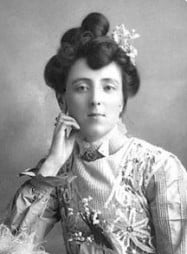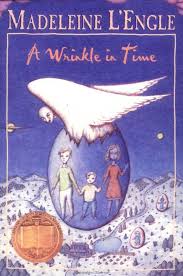Literary Rejection: Overcoming Hurt, Counting the Blessings
By Nava Atlas | On October 14, 2016 | Updated June 13, 2025 | Comments (0)

Tales of literary rejection are the war stories of writers. Nearly everyone experiences it, even (or especially) writers who eventually became famous and successful, but that doesn’t make it any more fun.
Rejection, we’ve been told, is part of the path to publication. We’re advised to grow a tough hide and accept that most rejections are nothing personal.
Even so, any kind of rejection can stings—even the bland “not looking at this time.” That’s because it’s difficult to separate the rejection of one’s work from the rejection of one’s self.
Every “no” plants a seed of self-doubt. Occasionally, even in longtime relationships with publishers and editors, I’ve had book proposals quashed as not having enough commercial promise. Though I understood these to be purely business decisions, and not about my ability, my immediate reaction was always a resounding “Ouch!”
Even among now-classic authors, the experiences of self-doubt, fear of failure, and rejection, are universal. A few of the Literary Ladies were spared the blows of rejection, while others were positively hammered by it.
. . . . . . . . . .
The Professor by Charlotte Brontë (1857)
Charlotte Brontë was as peeved as any author would be when her first novel, The Professor, met with continuous rejection, or cold silence as it made its way around the London publishing circle. Galling as this was to her, she didn’t sit idly by. Instead, she busied herself on her next project, which is what every sensible writer should do.
When finally a publisher saw enough merit in The Professor invited Brontë to submit a different work for consideration, she already had Jane Eyre nearly finished. The publisher printed and published it in mere weeks, whereupon it became an immediate sensation, and a best seller. See more in The Brontë Sisters’ Path to Publication. The Professor was published in 1857, two years after Charlotte’s death. When she passed away at age thirty-eight, she was celebrated author in England and abroad. See more about The Professor.
From Charlotte’s experience, it’s clear that it’s wise to continue working, rather than pining away for acceptance for a single work of writing.
Incidents in the Life of a Slave Girl
by Harriet Ann Jacobs (1861)

In 1857, Harriet Ann Jacobs (1813 – 1897) completed a manuscript for an account of her life in enslavement, and her struggle to free herself and her children. After all she’d been through, and how compellingly she presented her narrative, no publisher was willing to take the book on. Remember, this was several years before the Civil War and emancipation.
After repeated rejections, Harriet decided to publish the book herself, an impressive feat for any woman of that era, let alone one that had spent years seeking freedom as a fugitive. Incidents in the Life of a Slave Girl, Written by Herself, an autobiography that reads like a novel, was published in 1861. Though Incidents is autobiography, it reads like a novel, with a narrator named Linda Brent. But in the Preface, Jacobs made sure that readers understood that the book was wholly based on her own experiences.
She was the first to write frankly about the sexual abuse endured by enslaved women. Renowned author Lydia Maria Child, a contemporary of Jacobs, wrote an introduction to the book. More about Incidents in the Life of a Slave Girl, which has been published in several recent editions.
. . . . . . . . .
Peter Rabbit by Beatrix Potter (1902)

The simple story, a timeless children’s classic, is the tale of a mischievous rabbit who becomes the bane of Mr. McGregor and his garden. In 1900, Beatrix Potter, who also did the exquisite illustrations for it (and her subsequent books) sent it out to several publishers, all of whom rejected it.
The following year, Beatrix published 250 copies at her own expense; they sold out quickly. In 1902, Frederick Warne & Company acquired the rights, and the rest is publishing history. Peter Rabbit has since been reprinted endlessly and translated into dozens of languages. With tens of million copies sold, it’s one of the best-selling books of all time. And Beatrix would have married her editor, Norman Warne, had he not gotten ill and met with an untimely death.
Frederick Warne & Company published all twenty-three of Beatrix Potter’s subsequent books, making her wealthy. She used much of her fortune to preserve the beautiful lands of England’s Lake Country, and bequeathed it to England’s National Trust.
. . . . . . . . . .
Anne of Green Gables by L.M. Montgomery (1908)
L.M. Montgomery, best known for the Anne of Green Gables series, wrote in her memoir:
“At first I used to feel dreadfully hurt when a story or poem over which I had laboured and agonized came back, with one of those icy little rejection slips. Tears of disappointment would come in spite of myself…But after a while I got hardened to it and did not mind. I only set my teeth and said, ‘I will succeed.’ I believed in myself, and I struggled on, in secrecy and silence…”
Gaining courage from eventual acceptance of shorter works, Montgomery began submitting her first full-length work, Anne of Green Gables. Demoralized after a slew of rejections, she stashed the manuscript in a hatbox, and left it to languish. After a year or so, she steeled herself to try again.
Though she struggled mightily with depression, Montgomery was clear in her mission to bring joy to others through her work, and that she did accomplish, not only with her most iconic Anne series, but her subsequent books as well.
Years later, musing on her path to publication, Montgomery recounted how a book she wrote early in her writing life, but clearly not from her heart, was soundly rejected.
Though it hurt at the time, in hindsight, she recognized how lucky she was to have escaped getting locked into a niche that was wrong from her. See more in Publishing Anne of Green Gables: “One More Try.”
. . . . . . . . . . .
A Wrinkle in Time by Madeleine L’Engle (1962)
Madeleine L’Engle’s early literary life was famously marked with rejection. Her most iconic classic, A Wrinkle in Time, beloved by generations of children and adults alike, was rejected by some forty publishers as being too dark and complex for children. Yet she kept her faith in the book.
After nearly giving up, it found a home and vindication in the form of millions of copies sold and numerous awards. L’Engle reflected years after the fact:
“When my book was rejected by publisher after publisher, I cried out in my journal. I wrote, after an early rejection, “X turned down Wrinkle, turned it down with one hand while saying that he loved it, but didn’t quite dare do it, as it isn’t really classifiable, and am wondering if I’ll have to go through the usual hell with this that I seem to go through with everything that I write. But this book I’m sure of…”
L’Engle went on to enjoy a long and prolific career. Read more about L’Engle’s Long Years of Rejection. From her experience, we can take away the message that perseverance, coupled with faith in our work (and absolute honesty about its merits) is a path that may lead to eventual success.
Excerpted and adapted from The Literary Ladies’ Guide to the Writing Life by Nava Atlas



Leave a Reply